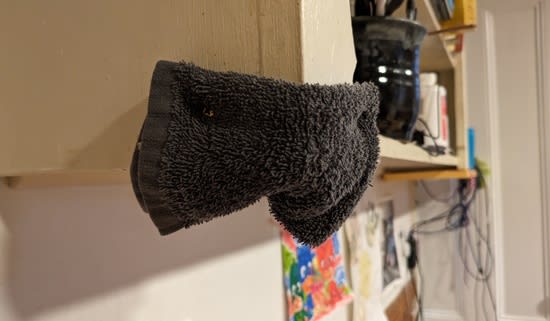There's a shelf in my dad's kitchen, about four feet off the ground. I remember when I stopped being short enough that I could walk under it: ouch! I didn't get a concussion or anything, but it was pretty unpleasant. My sisters and cousins also remember bonking their heads on it. I noticed my oldest was getting just tall enough, and started to tell her this story warning her about it.
While I was telling the story I realized how silly this was, and stopped what I was doing to put some padding on the corner.
A washcloth folded over and screwed to the shelf doesn't look wonderful, but it's now a couple years later, three of the cousins are tall enough to intersect with it, and no one has gotten hurt. Maybe someday we can do something more elegant, but in the meantime fixing sharp corners beats warning people.
